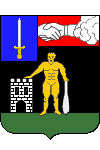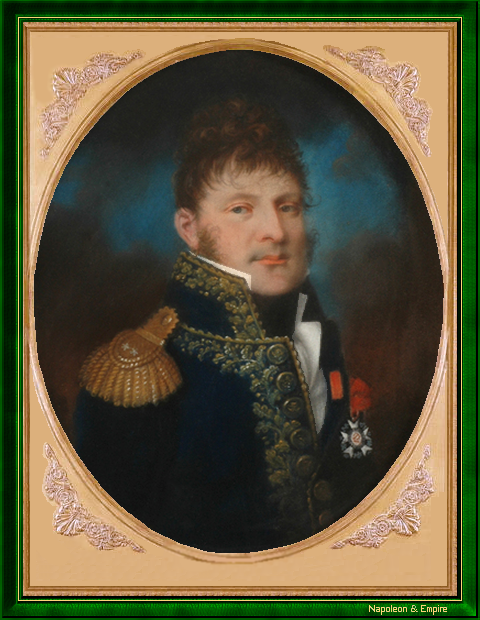Pierre-Augustin Hulin
Count of the Empire
Pronunciation:

Pierre-Augustin Hulin (surname sometimes spelled "Hullin") was born in Paris on September 6, 1758, into a modest family: his father was a cloth merchant.
On July 14, 1789, as a sergeant in the Swiss Guards, he led the French Guards and the crowd gathered on the Place de Grève (Hôtel de Ville) and marched on the Bastille, where he installed two cannons, forcing the governor Bernard-René Jordan de Launay to capitulate. At his own risk, Hulin tried to save the governor's life, but to no avail.
After the storming of the Bastille, Hulin gained in rank and took part in all the major events in Paris: the days of October 5 and 6, the attack on the Tuileries on August 10, etc., before being sent to the Armée du Nord.
On August 4, he was suspended from duty and a month later confined to the Abbaye prison, where he was not released until the fall of Maximilien Robespierre. Reintegrated into the army, he made the acquaintance of General Napoleon Bonaparte in the Army of Italy, and linked his destiny to his own.
Brigadier General in 1803, he chaired the military commission that condemned the Duke of Enghien to death.
He took part in the campaign in Germany of 1805 and the Prussian campaign in 1806, and was promoted to major general in August 1807. He was made a Comte d'Empire in 1808.
On October 23, 1812, during General Claude-François Malet's attempted coup d'état, Hulin, who had asked the conspirator for the orders in whose name he claimed to be acting, was seriously wounded by Malet when he was shot in the jaw. In the streets of Paris, he earned the nickname "Bouff' la balle".
During the Restoration, Louis XVIII did not forgive his role in the execution of the Duc d'Enghien, and Hulin was retired and proscribed by the ordinance of July 25, 1815. Returning to France blind, he retired from business and died on January 9, 1841.
General Hulin was buried in the 15th division of the Montparnasse cemetery in Paris .
"General Pierre-Augustin Hulin" by Johann Christian August Schwartz (1756-1814)

Two decades after the event, the memory of the execution of the Duc d'Enghien haunted the general, who published a text entitled Explications offertes aux hommes impartiaux par M. le comte Hulin au sujet de la commission militaire instituée en l'an XII pour juger le duc d'Enghien (Explanations offered to impartial men by Count Hulin concerning the military commission set up in Year XII to judge the Duc d'Enghien).